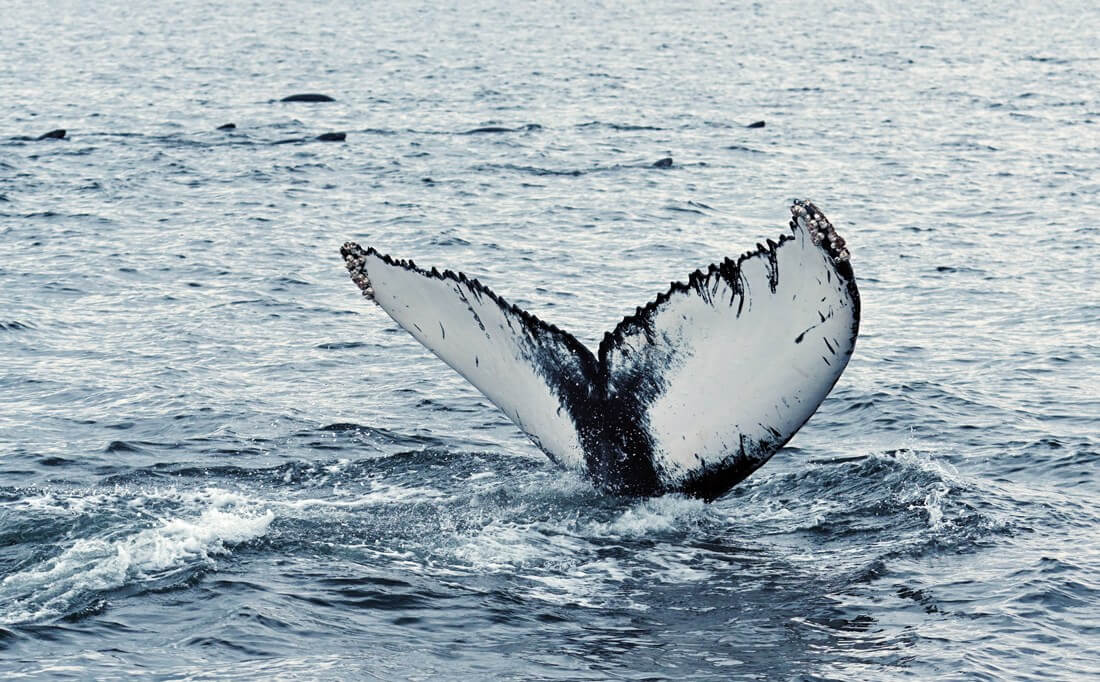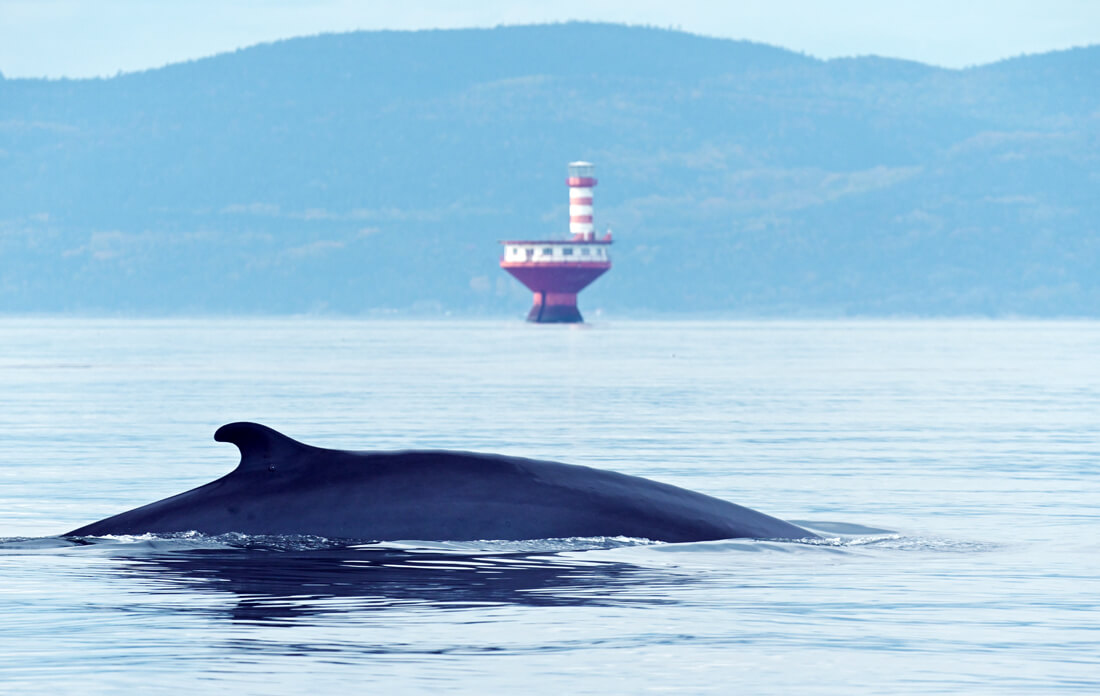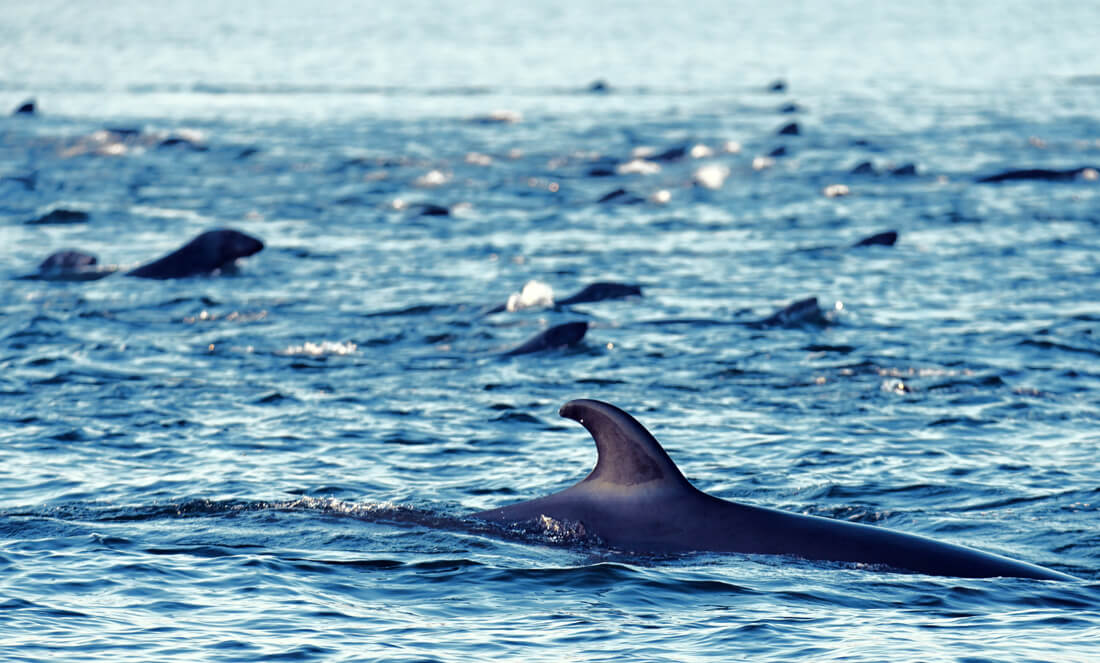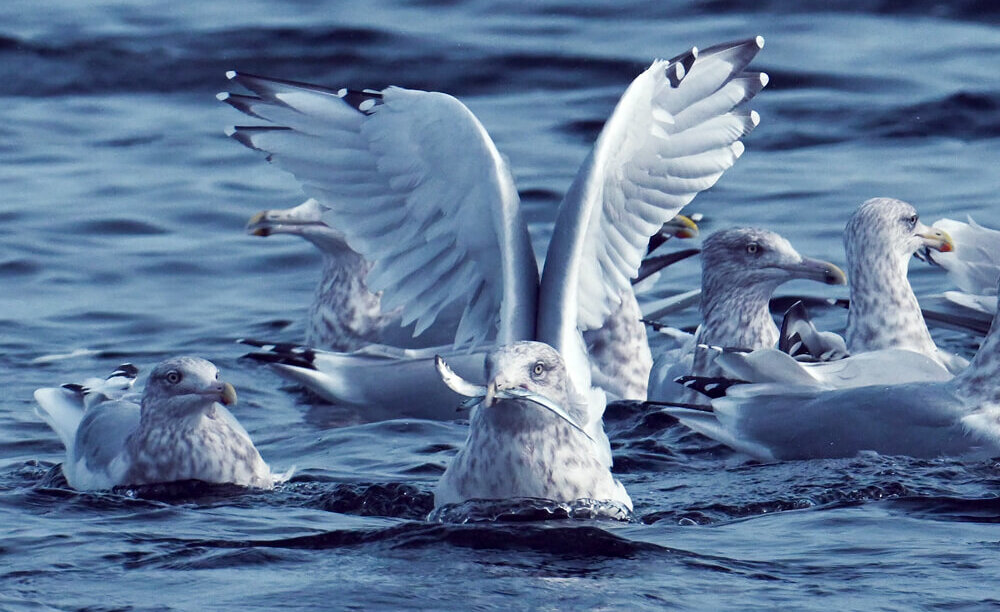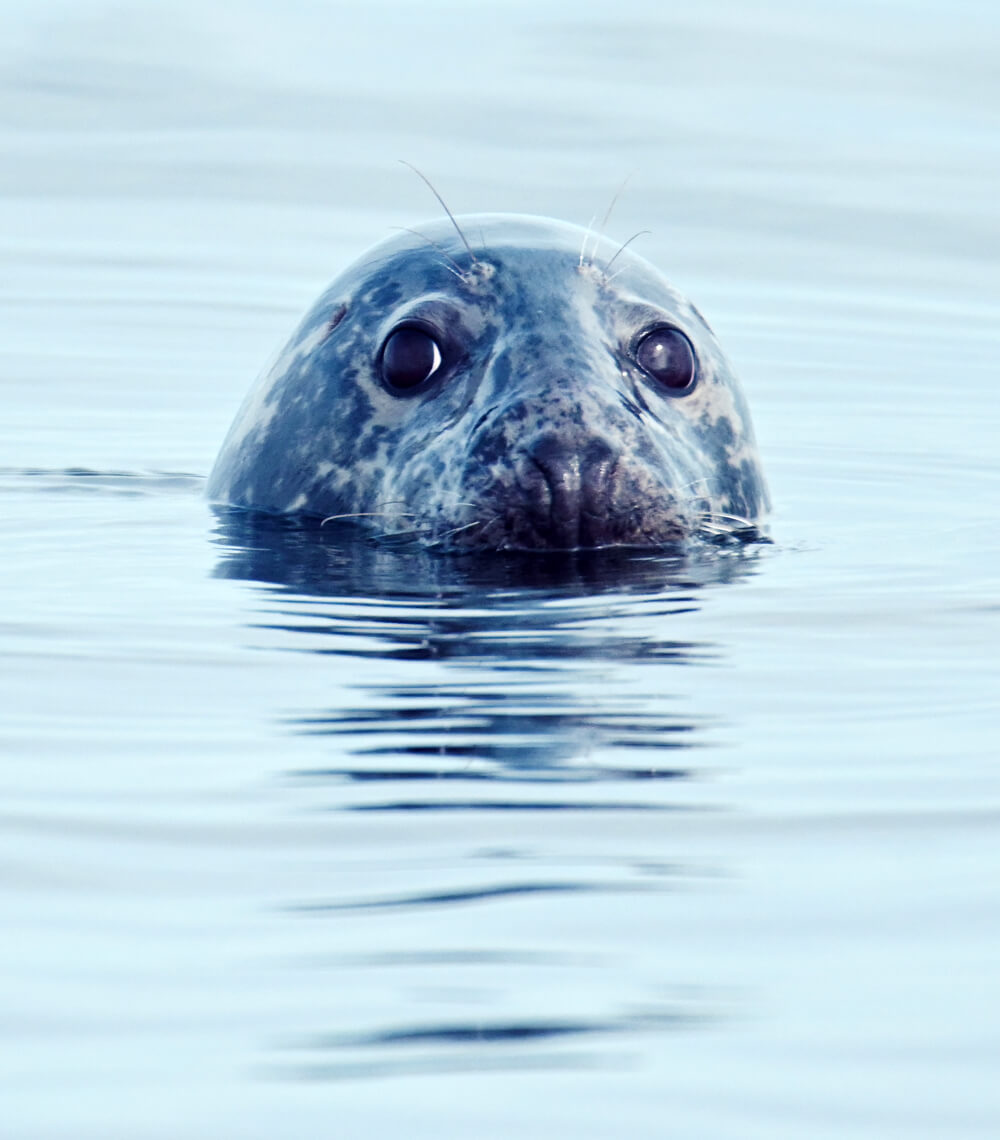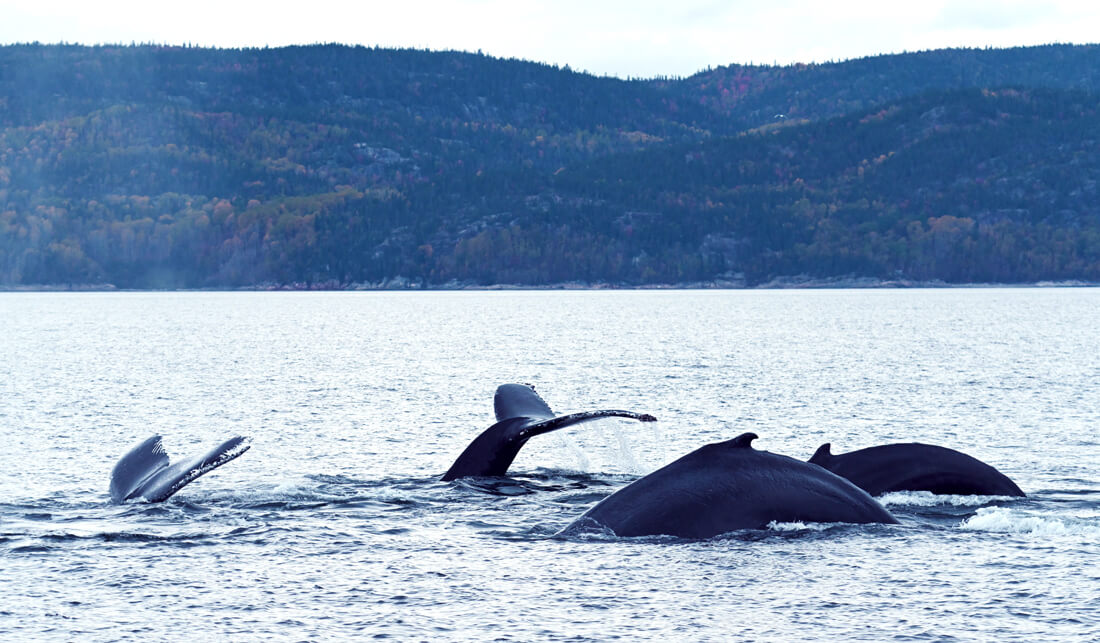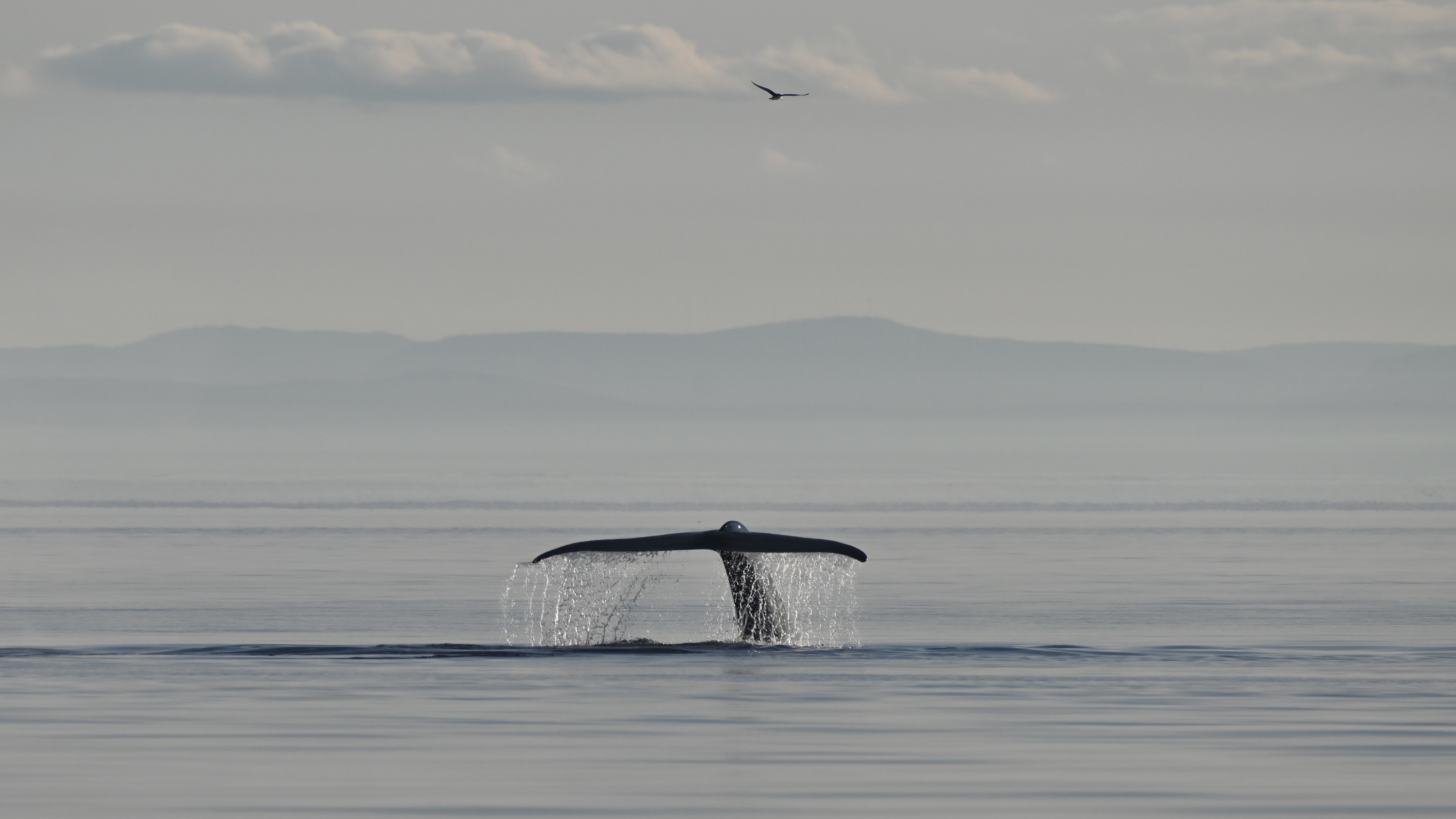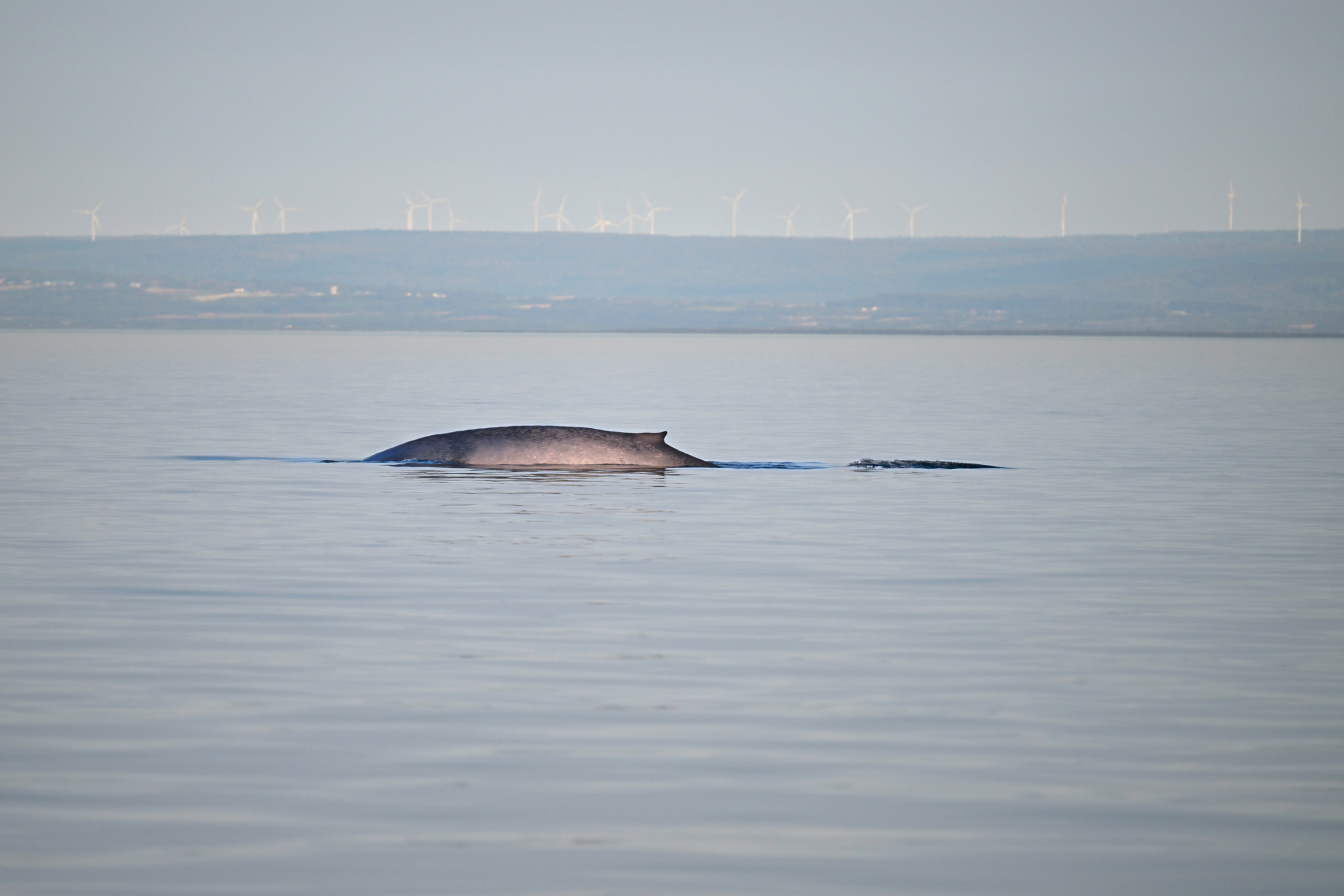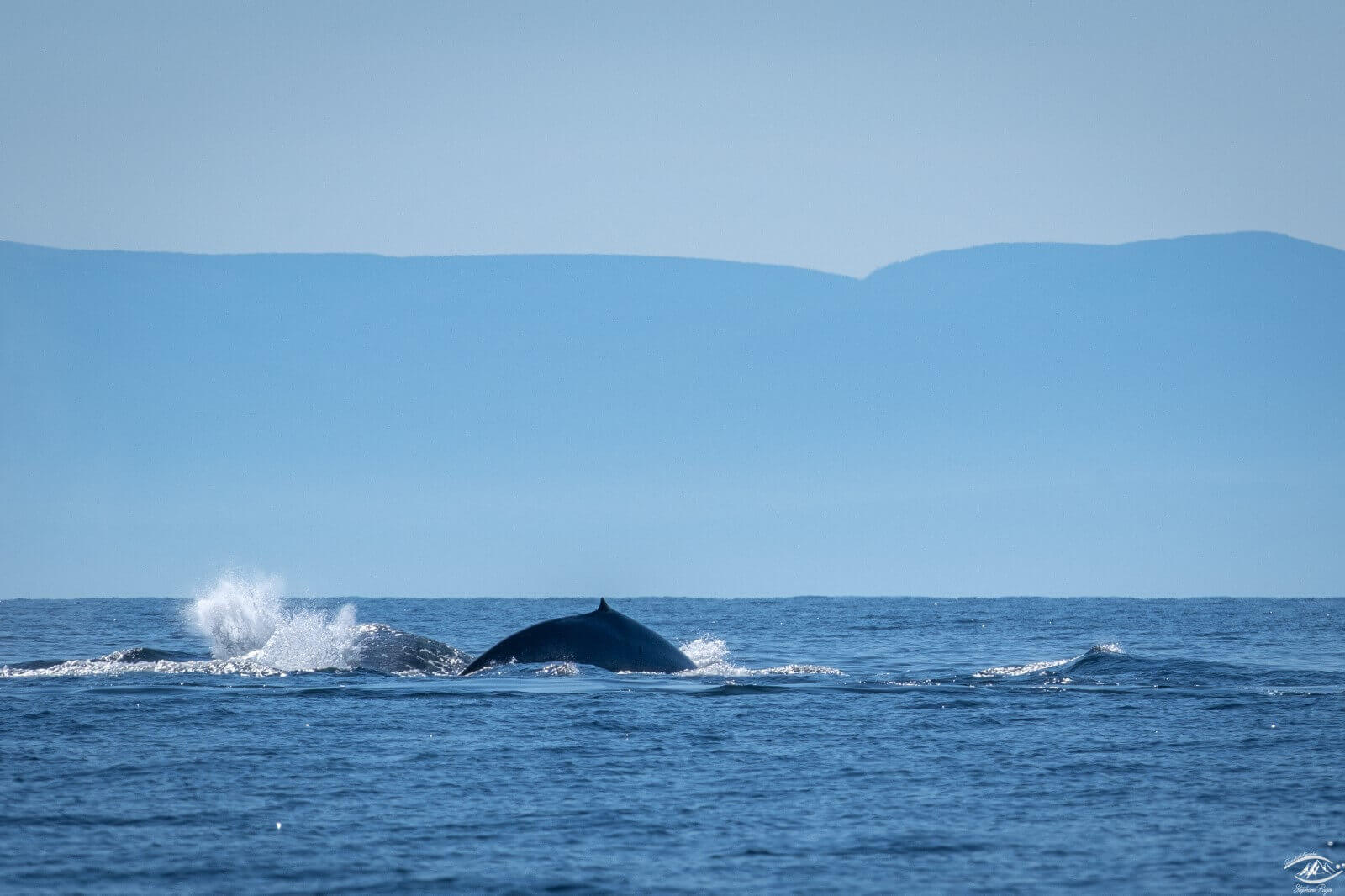In the sometimes calm, sometimes choppy waters of the St. Lawrence, cetaceans have made some noteworthy appearances. The clearly visible, resonating and striking spouts of large rorquals have been spotted up and down the watercourse, from the estuary to the gulf. Also observed were the less conspicuous breaths of minke whales, harbour porpoises and even Atlantic white-sided dolphins. Humpback whales put on just as much of a show with their tails before descending into the depths of the river.
In the Saguenay-Saint-Laurent Marine Park
This week, large rorquals were feasting offshore, delighting tourists as the season begins to wind down. Fin whales were observed spewing out massive jets of air, though some of the more wary individuals would occasionally dart away at lightning speed whenever approached by a watercraft. Rightly described as the greyhound of the seas, the fin whale is the fastest of all cetaceans. When an individual of this species decides to take off, the task of relocating it can prove arduous and tiring. Individuals there were able to be identified include Zipper, Ti-Croche and Bp33.
As some keen-eyed observers may have noticed, Ti-Croche and Bp33 were both sporting a satellite transmitter on their dorsal fin. These GPS transmitters were placed by scientists from Fisheries and Oceans Canada as part of a research project initiated in 2014. Developed in collaboration with the Mingan Island Cetacean Study, this project aims to track the autumn and winter movements of fin whales. These data may eventually help unravel some of the mysteries regarding the distribution areas and migratory patterns of this species.
Amid this week’s waves and inclement weather, over a dozen humpback whales were also diving in the estuary, including the likes of Siam, Aramis, Guadeloupe, Katana, Chewbacca, as well as a few new individuals. A very small, unknown humpback greeted passengers on board a cruise with the company Tadoussac Autrement. Could it have been a calf that has gained its independence in recent weeks? To say for sure, hopefully this individual will offer us a glimpse of its tail in the weeks to come.
Observers feasted their eyes on grey seals, minke whales, belugas and harbour porpoises in numbers, not to mention diverse flocks of seabirds including guillemots, kittiwakes, common eiders, razorbills, puffins and much more. Atlantic white-sided dolphins also continued to show off in the area as kaleidoscopic rainbows brightened up the otherwise cloudy days of North Shore residents.
In the Saguenay Fjord, belugas glistened and harbour seals took it easy at the foot of the cliffs.
In Gaspésie
In the Gaspé region, sightings lists are just as rich. Near Gaspé Bay and Cap des Rosiers, multiple basking sharks entertained residents and tourists alike, not to mention distant herds of grey and harbour seals. Minke whales, harbour porpoises and white-sided dolphins also cut across the waves in a quest for tasty prey. An incredibly powerful blast heard well offshore raised hopes that a blue whale might be present in the area, while several fin whales were also noted by captains in the region.
Humpback whales have been particularly plentiful of late, sometimes surfacing in variably scattered groups of around ten individuals. The female H492 (a.k.a. Irisept) has even been identified. This regular visitor to the gulf owes her name to the shape of the black iris and the small white “7” on her right lobe and near the middle of her tail, respectively. She can also be recognized by the unique shape of her truncated dorsal fin and the pronounced relief of some of the vertebrae in her peduncle area. In 2022, she was seen on several occasions with a calf, suggesting that this young individual may have been one of her own.
Une population en croissance
More than a dozen humpbacks were tallied in the estuary and just as many in Gaspésie. What does this mean for the population? In fact, the humpback whale is a species that appears to be recovering from the heavy whaling of the 20thcentury. Great news: populations are increasing almost everywhere around the globe! Furthermore, many scientists believe that this is the reason for the growing presence of this species in the Marine Park.
As the season progresses, the St. Lawrence is increasingly teeming with marine life. The river breathes to the rhythm of cetaceans that come and go, feeding in its biodiversity-rich waters. Every day, these remarkable sightings remind us that just because temperatures are dropping, it doesn’t mean that life around us has come to a halt.
Where are the whales this week? Observation map
These data were reported by our network of observers. They give an idea of the presence of whales and in no way represent the actual distribution of whales in the St. Lawrence. Use it for fun!
Click on the whale or seal icons to discover the species, the number of individuals, additional information or photos of the sighting. To enlarge the map, click on the icon in the top right-hand corner. The map works well on Chrome and Firefox, but not so well on Safari.
To display the list of sightings, click on the icon in the top left-hand corner.


